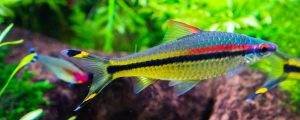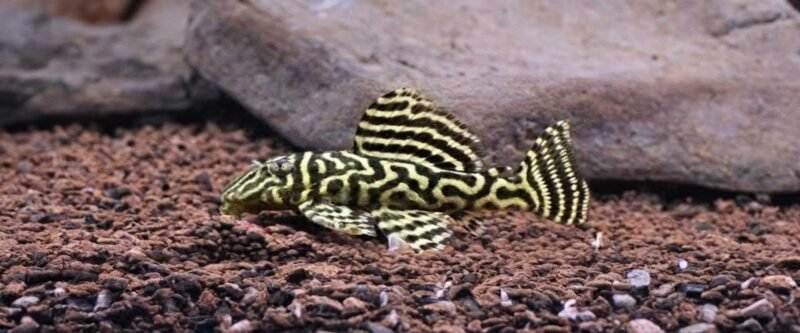The Tiger Barb (Puntigrus tetrazona): Bold, Beautiful, and Beguiling
The Tiger Barb, scientifically known as Puntigrus tetrazona, is a striking and charismatic fish species that has earned a special place in the hearts of aquarists around the world. Known for its striking appearance, active nature, and social behaviors, this fish is a popular choice for both beginners and experienced aquarists. In this blog post, we’ll take a closer look at the Tiger Barb, exploring its natural habitat, suitability for community tanks, native range, dietary preferences, and essential care guidelines.
Habitat and Native Range
Tiger Barbs originate from the clear and fast-flowing waters of Southeast Asia, particularly in countries like Indonesia, Malaysia, and Thailand. In their natural habitat, these fish thrive in rivers and streams with dense vegetation, rocky substrate, and a strong water current. This environment is characterized by slightly acidic to neutral water conditions and temperatures that range from 72-79°F (22-26°C).
Physical Characteristics
The Tiger Barb boasts a vibrant and eye-catching appearance, making it a standout in any aquarium. Its name is derived from the bold black vertical stripes that resemble a tiger’s stripes, contrasting dramatically with its silver or gold body coloration. These stripes extend from the head to the caudal fin, creating a captivating and visually striking pattern.
Suitability for Community Tanks
Tiger Barbs are known for their lively and active nature, making them a favorite choice for community tanks. However, there are some important considerations when keeping them with other fish. Tiger Barbs can display fin-nipping behavior, especially if kept in small groups or in inadequate tank conditions. To minimize aggression, it’s recommended to keep them in larger schools (6 or more individuals) to distribute their interactions among themselves. Ideal tankmates include other robust and fast-swimming species like danios, rasboras, and larger tetras.
Diet and Feeding
In their natural habitat, Tiger Barbs are omnivorous and feed on a varied diet of small invertebrates, insects, and plant matter. In aquariums, they readily accept a range of foods, including high-quality flakes, pellets, and live or frozen foods such as brine shrimp, bloodworms, and daphnia. A diverse diet helps maintain their vibrant coloration and overall health.
Tank Requirements and Care
To create an ideal environment for your Tiger Barbs, consider the following care guidelines:
- Tank Size: A tank of at least 20 gallons (75 liters) is recommended to provide ample swimming space for a school of Tiger Barbs. A larger tank is preferred if you plan to keep them with other fish species.
- Water Parameters: Maintain water temperatures between 72-79°F (22-26°C) and slightly acidic to neutral pH levels around 6.0-7.0. Frequent water changes and efficient filtration are crucial for their well-being.
- Aquascape: Mimic their natural habitat with plenty of rocks, driftwood, and live plants. Ensure there are hiding spots and open swimming areas to accommodate their active behavior.
- Schooling Behavior: Tiger Barbs are shoaling fish and thrive when kept in groups of six or more individuals. A larger school reduces territorial aggression and promotes natural behaviors.
Conclusion
In conclusion, the Tiger Barb (Puntigrus tetrazona) is a captivating and lively fish species that brings energy and excitement to any aquarium. Their striking appearance, active nature, and social behaviors make them a favorite among aquarists. By creating an environment that replicates their natural habitat and providing a diverse diet, you can ensure the well-being of your Tiger Barbs and enjoy their vibrant presence in your community tank. These charismatic fish are sure to add a touch of bold beauty to your aquatic world.












